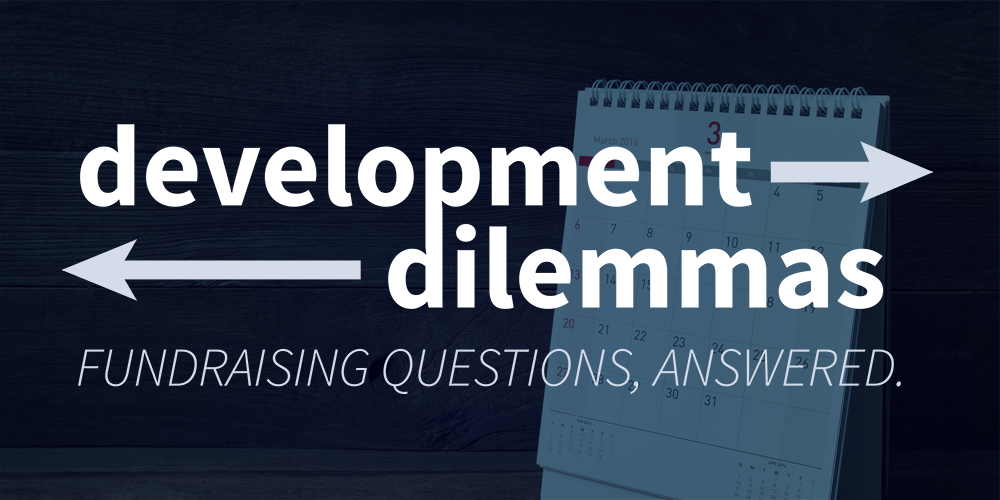Like any relationship, donor relationships are built over time – you don’t usually begin a relationship with an ask up front—rather, you build slowly, cultivating the relationship, gaining the trust of the prospect and building confidence in your cause.
Once a gift has been received and acknowledged, it can be easy to put the donor on the “back burner," but this is far from the end of your relationship with that donor -- in fact, it's just the beginning! Repeat donors are incredibly valuable, and the best cultivation of a donor prior to asking for a second gift is attentive recognition and stewardship of their first.
For the financial health of your institution, it is very important to find a way to make long-term donor cultivation and stewardship a priority for all. Finding the time to develop specific donor stewardship and cultivation activities which build engagement is critical to the growth of your fundraising program.
In Keep your Donors, The Guide to Better Communications and Stronger Relationships, Simone Joyaux outlines four steps in relationship building:
- Respect and understand the needs and motivations of your constituents
- Meet their needs if they are in keeping with your organization’s values, mission, and vision
- Communicate your programs and activities and their value to the constituents
- Follow-up and nurture the relationship.
While you do not have to develop a complicated plan to pursue each of these steps, you should include some very basic activities to help with donor engagement. Here are some ways to build your relationships and engage your donors more effectively, even if your resources are limited.
1. Say thank you in a timely fashion. Best practices today promote a 24-hour turnaround time to acknowledge a gift. Having this kind of follow-up sends a message to the donor that they are both important and appreciated. This is a non-negotiable -- even if your organization is short on resources, a prompt thank you makes an enormous difference in donor retention. Try automating emails for smaller donors, but be sure that higher-level donors are receiving more personalized thank yous.
2. Invite the donor to observe a program. In lieu of donors appreciation events that can be costly, allow them an inside peek at what they're supporting. If this isn’t attainable, send them a video clip, interesting news article, or a personalized note. Look for opportunities that you can connect the donor directly to your mission or the beneficiaries of it. Demonstrating the donors' impact in a personal way allows them to feel both loyalty to your institution and some ownership over its cause, knowing that they might make an impact by their participation in supporting your efforts again.
3. Meet in person. Ask the donor to meet with you over a cup of coffee or find another reason to meet up. Once you have the meeting, share with your donors about how their support furthers your mission. Give them concrete examples of why their support is important. This meeting also offers you the opportunity to ask your donor to share why they care about the organization. Take the time to listen to their interests and understand how they connect to your mission. At the end of the meeting, you should have a call to action planned – you can do this by providing a menu of activities or ways that they can get involved with your organization. When donors better understand all their options for involvement, they can see themselves in various roles and pick ways to get involved that are meaningful to them.
4. Keep the president involved. Your chief administrator may feel that they have many “more important” matters to address, but donors appreciate the attention received from the president above all others. The development staff supports the acknowledgment and recognition process, and their participation is very important, but the attention of the president more effectively underscores the impact of the donor’s contribution to your organization.
5. Be creative, authentic, and regular in your communications. Engaging donors is really all about building relationships like you do with anyone else. Relationships need to be nurtured and cared for. When you take the time to listen and get to know someone, they will be actively engaged with you and your organization.



Comments
Questions or comments? Join the conversation!